Abstract
To evaluate the effects of parenteral cefoperazone therapy upon human fecal flora, fecal specimens obtained from four patients before and during therapy (as well as after therapy for one patient) were cultured quantitatively for facultative, aerobic, and anaerobic bacteria and for fungi. Cefoperazone therapy was associated with major changes in fecal flora. There was suppression to undetectable levels or an appreciable reduction in all anaerobic bacteria as well as suppression of all initially detected Enterobacteriaceae. During therapy, there was acquisition or an increase in counts of Candida spp., so that these became the most numerous fecal microorganisms in all patients. In addition, Pseudomonas spp. and coagulase-negative Staphylococcus sp. were acquired by three patients. These marked alterations in flora have potentially important consequences.
Full text
PDF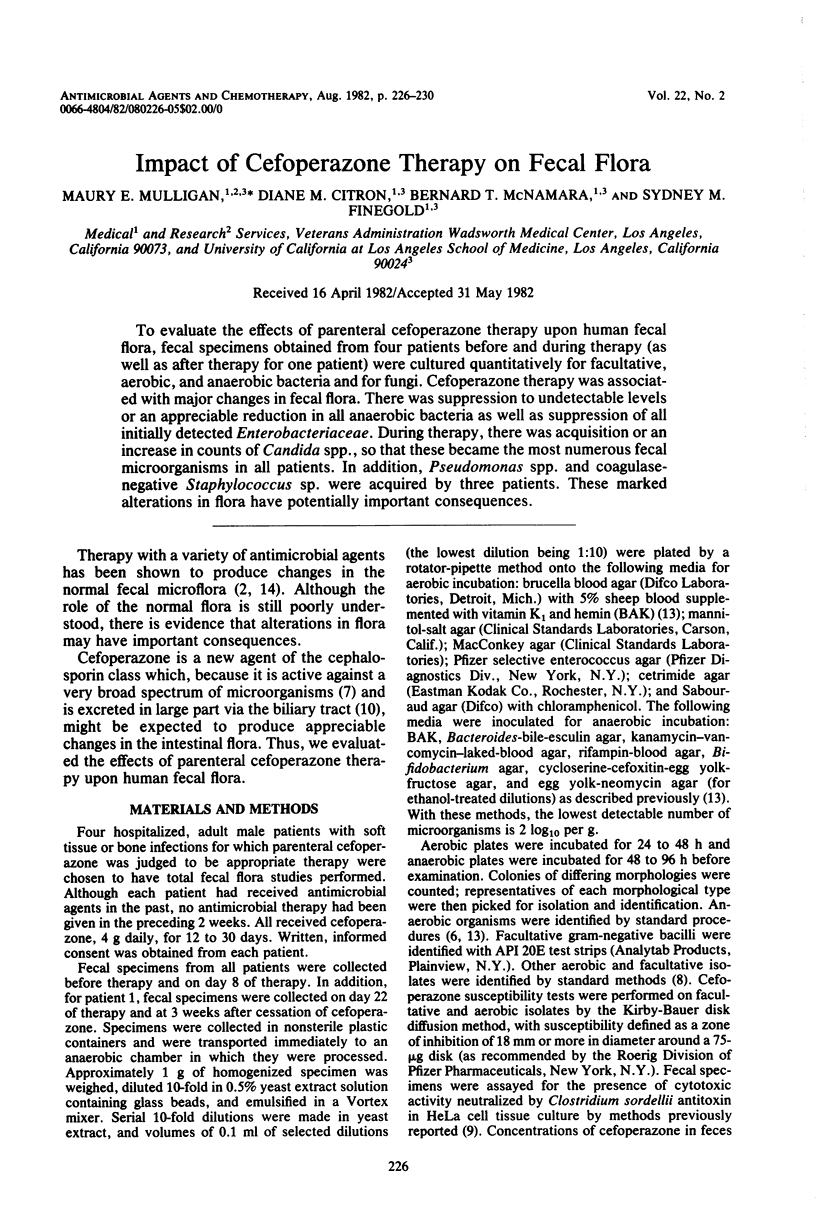
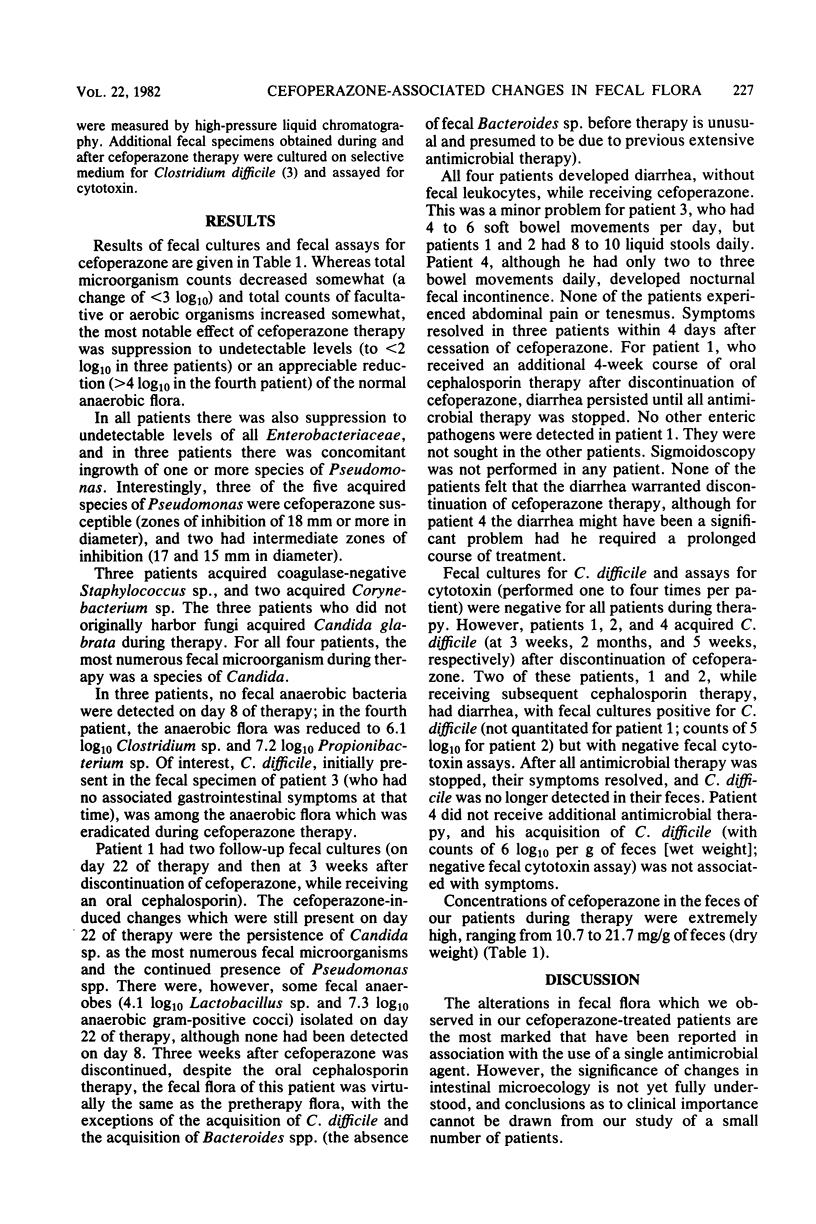
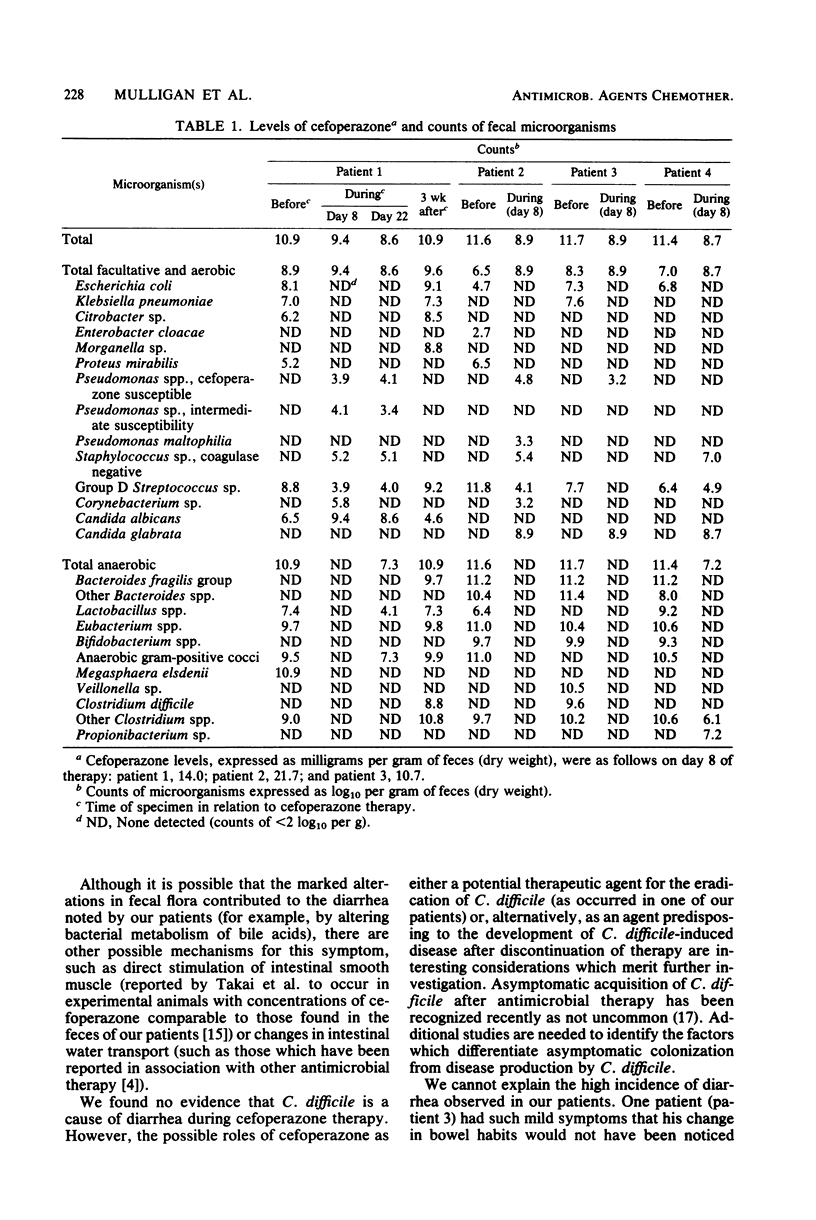
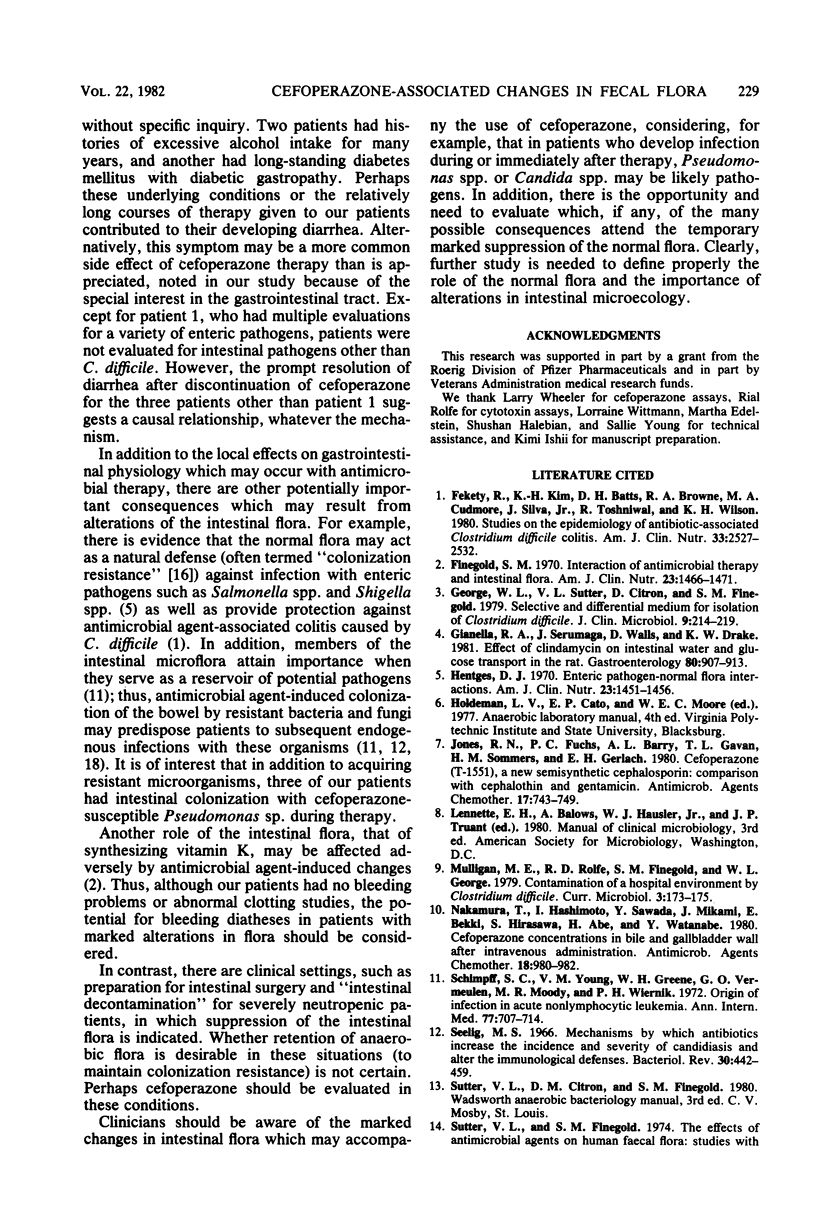
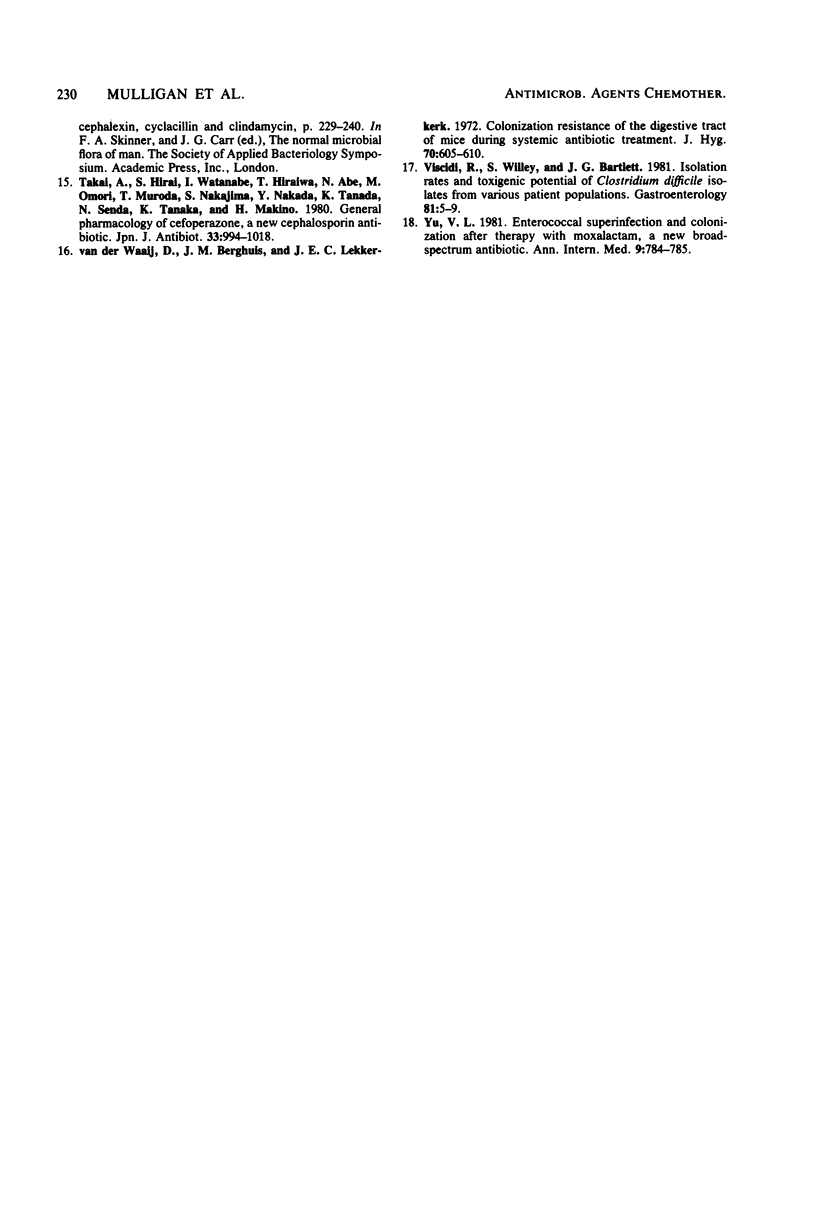
Selected References
These references are in PubMed. This may not be the complete list of references from this article.
- Fekety R., Kim K. H., Batts D. H., Browne R. A., Cudmore M. A., Silva J., Jr, Toshniwal R., Wilson K. H. Studies on the epidemiology of antibiotic-associated Clostridium difficile colitis. Am J Clin Nutr. 1980 Nov;33(11 Suppl):2527–2532. doi: 10.1093/ajcn/33.11.2527. [DOI] [PubMed] [Google Scholar]
- Finegold S. M. Interaction of antimicrobial therapy and intestinal flora. Am J Clin Nutr. 1970 Nov;23(11):1466–1471. doi: 10.1093/ajcn/23.11.1466. [DOI] [PubMed] [Google Scholar]
- George W. L., Sutter V. L., Citron D., Finegold S. M. Selective and differential medium for isolation of Clostridium difficile. J Clin Microbiol. 1979 Feb;9(2):214–219. doi: 10.1128/jcm.9.2.214-219.1979. [DOI] [PMC free article] [PubMed] [Google Scholar]
- Giannella R. A., Serumaga J., Walls D., Drake K. W. Effect of clindamycin on intestinal water and glucose transport in the rat. Gastroenterology. 1981 May;80(5 Pt 1):907–913. [PubMed] [Google Scholar]
- Hentges D. J. Enteric pathogen--normal flora interactions. Am J Clin Nutr. 1970 Nov;23(11):1451–1456. doi: 10.1093/ajcn/23.11.1451. [DOI] [PubMed] [Google Scholar]
- Jones R. N., Fuchs P. C., Barry A. L., Gavan T. L., Sommers H. M., Gerlach E. H. Cefoperazone (T-1551), a new semisynthetic cephalosporin: comparison with cephalothin and gentamicin. Antimicrob Agents Chemother. 1980 Apr;17(4):743–749. doi: 10.1128/aac.17.4.743. [DOI] [PMC free article] [PubMed] [Google Scholar]
- Nakamura T., Hashimoto I., Sawada Y., Mikami J., Bekki E., Hirasawa S., Abe H., Watanabe Y. Cefoperazone concentrations in bile and gall bladder wall after intravenous administration. Antimicrob Agents Chemother. 1980 Dec;18(6):980–982. doi: 10.1128/aac.18.6.980. [DOI] [PMC free article] [PubMed] [Google Scholar]
- Schimpff S. C., Young V. M., Greene W. H., Vermeulen G. D., Moody M. R., Wiernik P. H. Origin of infection in acute nonlymphocytic leukemia. Significance of hospital acquisition of potential pathogens. Ann Intern Med. 1972 Nov;77(5):707–714. doi: 10.7326/0003-4819-77-5-707. [DOI] [PubMed] [Google Scholar]
- Seelig M. S. Mechanisms by which antibiotics increase the incidence and severity of candidiasis and alter the immunological defenses. Bacteriol Rev. 1966 Jun;30(2):442–459. doi: 10.1128/br.30.2.442-459.1966. [DOI] [PMC free article] [PubMed] [Google Scholar]
- Takai A., Hirai S., Watanabe I., Hiraiwa T., Abe N., Omori M., Muroda T., Nakajima S., Nakada Y., Tanada K. [General pharmacology of cefoperazone, a new cephalosporin antibiotic (author's transl)]. Jpn J Antibiot. 1980 Oct;33(10):994–1018. [PubMed] [Google Scholar]
- Viscidi R., Willey S., Bartlett J. G. Isolation rates and toxigenic potential of Clostridium difficile isolates from various patient populations. Gastroenterology. 1981 Jul;81(1):5–9. [PubMed] [Google Scholar]
- Yu V. L. Enterococcal superinfection and colonization after therapy with moxalactam, a new broad-spectrum antibiotic. Ann Intern Med. 1981 Jun;94(6):784–785. doi: 10.7326/0003-4819-94-6-784. [DOI] [PubMed] [Google Scholar]


